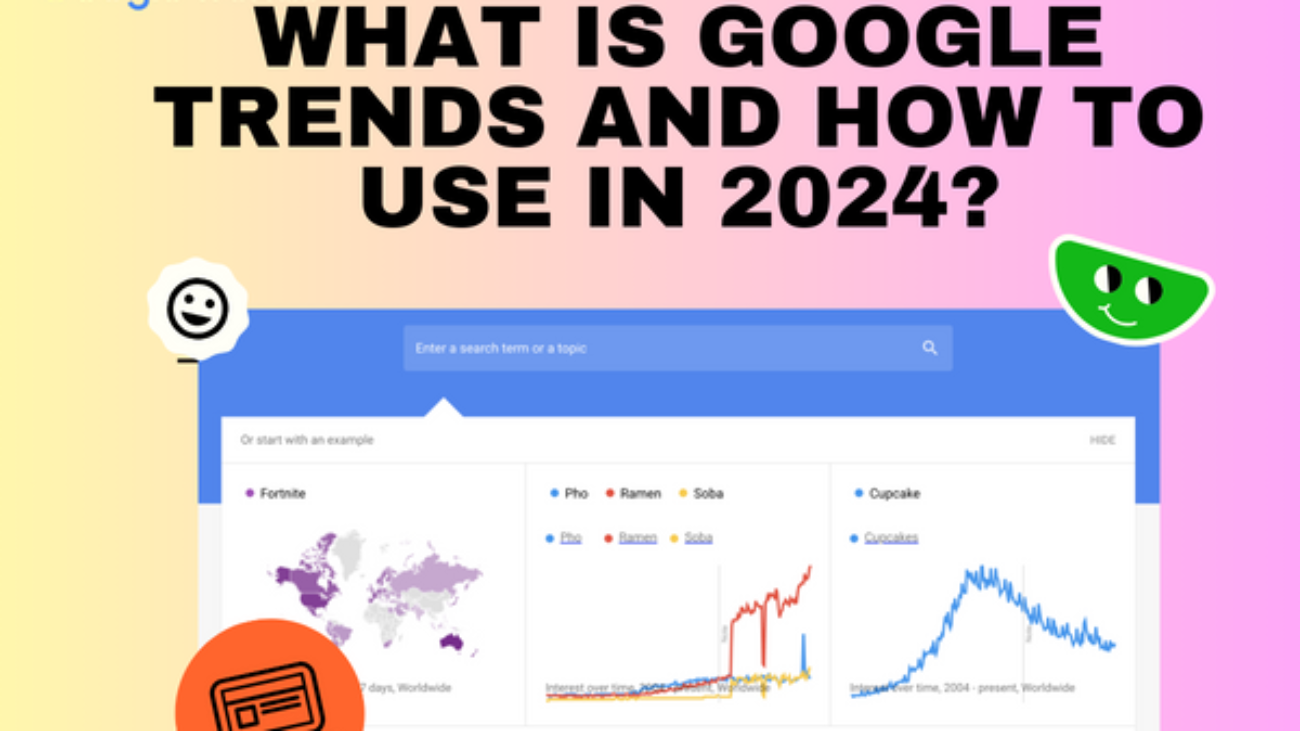What is Google Trends and how to use in 2024?
Understanding Google Trends: A Comprehensive Guide

Google Trends is a powerful tool provided by Google that allows users to explore the popularity of search terms over time and across different regions. It provides valuable insights into what people are searching for online, making it a valuable resource for marketers, content creators, and businesses alike. By understanding how to interpret the data provided by Google Trends, users can gain a deeper understanding of consumer behavior and make informed decisions about their marketing strategies.
Exploring the Power of Google Trends in 2024
In 2024, Google Trends remains an invaluable resource for staying updated on the latest trends and topics. With the rapid pace of change in today’s digital landscape, it’s more important than ever for businesses to stay ahead of the curve. By exploring Google Trends, users can identify emerging trends, anticipate shifts in consumer behavior, and adapt their strategies accordingly. Whether you’re a marketer, entrepreneur, or content creator, harnessing the power of Google Trends can help you stay competitive in a constantly evolving marketplace.
Why Google Trends Matters in 2024: Leveraging Insights for Success
It provides real-time data on what people are searching for online. This information is invaluable for businesses looking to understand their target audience, identify new opportunities, and stay ahead of the competition. By leveraging the insights provided by Google Trends, businesses can make informed decisions about their marketing strategies, content creation, and product development. In today’s fast-paced digital world, staying relevant and responsive to consumer trends is essential for success, and Google Trends is an indispensable tool for achieving that.
Navigating the Interface: A Step-by-Step Guide to Google Trends

Navigating the Google Trends interface is relatively straightforward, making it accessible to users of all skill levels. To get started, simply visit the Google Trends website and enter a search term or topic into the search bar. From there, you can customize your search by adjusting the date range, geographic location, and category filters. The interface also provides helpful visualizations, such as line graphs and heatmaps, to help users interpret the data. By following this step-by-step guide, you can quickly become proficient at using Google Trends to uncover valuable insights.
Utilizing Google Trends for Market Research and Analysis in 2024
One of the primary uses of Google Trends is for market research and analysis. By examining the popularity of search terms related to your industry or niche, you can gain valuable insights into consumer behavior, preferences, and interests. For example, you can use Google Trends to identify rising trends, track the performance of keywords over time, and compare the popularity of different products or services. By leveraging this information, businesses can make more informed decisions about their marketing strategies, product offerings, and target audience.
Uncovering Trending Topics: How to Identify Hot Topics with Google Trends.
Identifying trending topics is another valuable use of Google Trends. By monitoring the popularity of search terms in real-time, you can quickly identify topics that are gaining traction and generating buzz online. This can be particularly useful for content creators looking to capitalize on current events, news stories, or cultural trends. By incorporating trending topics into your content strategy, you can increase engagement, attract more traffic to your website, and stay relevant to your audience.
Tracking Seasonal Trends: Optimizing Strategies for Peak Performance
Seasonal trends play a significant role in many industries, influencing consumer behavior and purchasing decisions throughout the year. With Google Trends, you can track the popularity of search terms over specific time periods, allowing you to identify seasonal trends and optimize your strategies accordingly. For example, retailers can use Google Trends to anticipate peak shopping seasons and adjust their marketing campaigns and promotions accordingly. By staying ahead of seasonal trends, businesses can maximize their opportunities for success and drive better results.
Analyzing Geographic Trends: Tailoring Your Approach for Different Regions

Google Trends also provides valuable insights into geographic trends, allowing you to tailor your approach to different regions and markets. By examining the popularity of search terms in specific locations, you can identify regional preferences, cultural differences, and market opportunities. This can be particularly useful for businesses operating in multiple regions or looking to expand into new markets. By understanding the unique characteristics of each region, businesses can develop more targeted and effective marketing strategies that resonate with local audiences.
Geographic Trends: Tailoring Your Approach for Different Regions
Incorporating Google Trends into your content strategy can help you create more relevant, timely, and engaging content for your audience. By identifying trending topics, keywords, and search queries, you can tailor your content to meet the needs and interests of your target audience. For example, you can use Google Trends to identify popular search queries related to your industry or niche and create content that addresses these topics. By staying attuned to the latest trends and insights, you can ensure that your content remains fresh, compelling, and valuable to your audience.
Measuring Success: Interpreting Data and Making Informed Decisions with Google Trends
Finally, measuring success with Google Trends involves interpreting the data provided and making informed decisions based on those insights. By tracking key metrics such as search volume, interest over time, and geographic distribution, you can gauge the effectiveness of your marketing efforts and identify areas for improvement. For example, you can use Google Trends to compare the performance of different marketing campaigns, track the impact of changes to your website or content strategy, and evaluate the success of new product launches. By leveraging these insights, you can optimize your strategies for maximum impact and drive better results for your business.
Customer FAQs.
Q: What is Google Trends, and how does it work?
A: Google Trends is a tool provided by Google that allows users to explore the popularity of search terms over time and across different regions. It uses data from Google Search to provide insights into what people are searching for online and how those interests change over time.
Q: How can I use Google Trends for my business?
A: Google Trends can be used for a variety of purposes, including market research, content strategy, and performance tracking. By analyzing trends in search data, businesses can gain valuable insights into consumer behavior, identify new opportunities, and optimize their marketing strategies for maximum impact.
Q: Is Google Trends free to use?
A: Yes, Google Trends is free to use for anyone with an internet connection. Simply visit the Google Trends website to access the tool and start exploring search trends.
Q: Can I use Google Trends to track my competitors?
A: Yes, Google Trends can be used to track the popularity of search terms related to your competitors. By comparing the performance of different keywords and topics, you can gain insights into your competitors’ strategies and identify areas where you can gain a competitive advantage.
Q: How often is Google Trends updated?
A: Google Trends is updated in real-time, providing users with the most up-to-date information on search trends and topics. This allows users to track changes in consumer behavior and interests as they happen.






